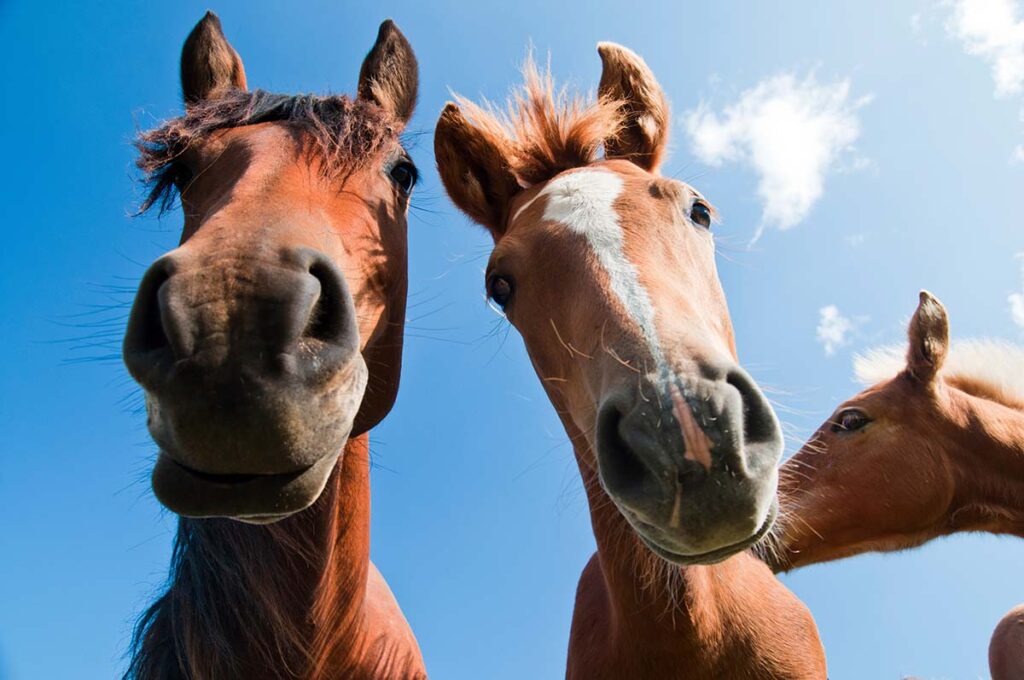Horseback riding involves inherent risks, no matter the horse’s steadfastness or the rider’s skill level. Horses are large and powerful animals, and accidents can happen. In this article, we’ll review important horseback riding safety tips, from choosing the right equipment to staying aware of your surroundings. We want you to enjoy horseback riding to its fullest while minimizing the risk of injury or accident.
Basic Horseback Riding Safety Tips for Any Rider

Before you mount up, review these universal recommendations intended to keep you safe when working around or riding horses:
- Make sure you’re not overfaced and that your skills match your horse’s temperament.
- Become well versed in equine behavior and best horse-handling practices.
- Inspect your tack and equipment regularly, replacing anything that’s damaged or worn.
- Don’t wear overly loose clothing that could get hung up on tack and equipment.
- If possible, don’t handle or ride horses alone.
- When leading a horse, always hold the reins or lead rope in folds, not looped or wrapped around your arm or hand.
- Keep your feet in the stirrups while riding, just in case your horse spooks unexpectedly.
- Learn how to emergency dismount in a potentially dangerous situation.
- Don’t make sudden noises or movements around horses or expose them to things that can spook them, such as umbrellas, camera flashes, loose dogs, and crowds.
- Look up the weather forecast before riding outside. Get off your horse and return to the barn if you detect thunder or lightning.
Protective Gear

The right gear can significantly reduce the number and severity of horse-related accidents. Here are three types of protection we recommend riders take full advantage of:
Helmets Always wear a properly fitting helmet (snug, with no more than one or two fingers of space between your chin and the chin strap) certified by the American Society for Testing and Materials (ASTM) and the Safety Equipment Institute (SEI). Replace your helmet every three to five years or immediately after an impact.
You can find comfortable and affordable helmets with lightweight materials, good ventilation, and fun styles, including cowboy hat helmets.
Body Protectors Protective vests are designed to absorb the impact of a fall and protect your chest, ribs, abdomen, spine, shoulders, and/or collarbone from bruises, lacerations, and other injuries. You can wear them over your riding clothes and under a jacket. Some vests are made of cushioning materials such as lightweight foam. Others include air bags that inflate upon impact with the ground.
Arm and Leg Protection Measures you can take to prevent fingers, toes, and limbs from getting crushed, cut, or fractured include:
- Wearing the proper footwear—sturdy shoes or boots that cover the ankle and have a one-inch heel.
- Wearing gloves to give you better grip on the reins and protect your hands from burns and blisters.
- Using safety stirrups that break away in the event of a fall or toe stoppers to keep your foot from sliding through the stirrup.
Take-Home Message
If you’re just learning to ride or not yet confident in your horse handling skills, ride under the supervision of or take lessons from an experienced trainer. Regardless of your horse know-how, constantly review horseback riding safety, and don’t take shortcuts when it comes to handling horses. While your horse probably doesn’t mean to cause you harm, you never know when a 1,200-pound prey animal might spook, spin, or take off unexpectedly.
Related Reading: Starting Horseback Riding Lessons: What To Know
Are you enjoying this content? Sign up for My New Horse’s FREE newsletter to get the latest horse owner info and fun facts delivered straight to your inbox!








